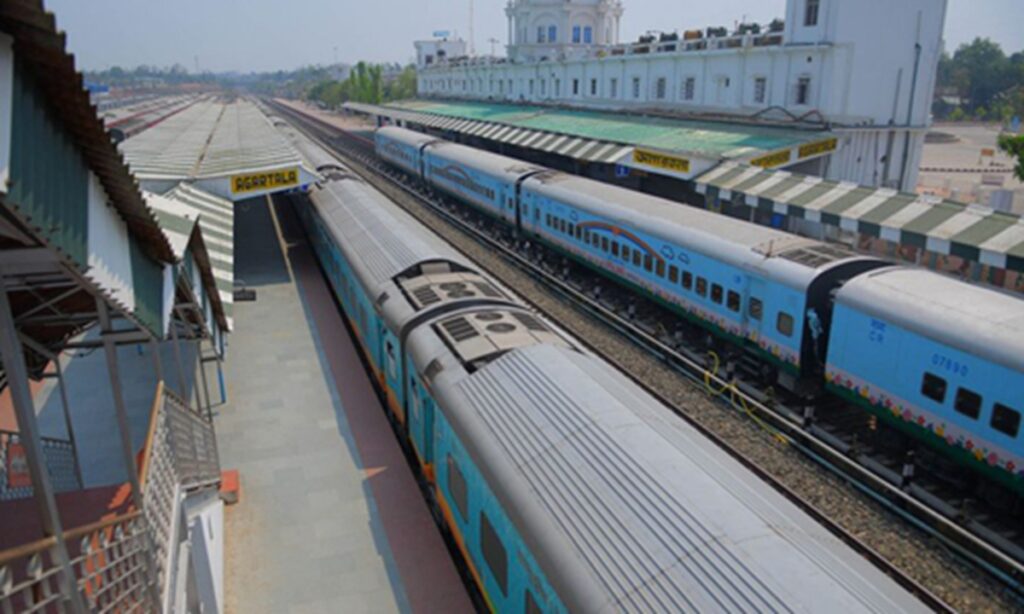It seems that India, with huge ambition for its own infrastructure development, is already certain to secure itself generous infrastructure investment from Japan. But could realizing rapid development of infrastructure like what has happened in China be as simple as that?
During a visit to India on Monday, Japanese Prime Minister Fumio Kishida announced a new plan to promote its Free and Open Indo-Pacific (FOIP) vision, promising over $75 billion worth of infrastructure aid for the region by 2030 via public and private capital, AFP reported.
It could be seen as Japan’s “political investment” targeting China. Japan’s real purpose of roping in China’s neighbors at huge costs is to become a “political power,” as it is eyeing to use the US strategy toward China to establish its leadership in Asia, forming a circle countering China.
While Kishida’s plan has been described by some Western media outlets as an effort to “counter China’s growing assertiveness” in the region, it would still be a good thing if Japan could really help India lay the infrastructure foundation needed to facilitate the latter’s manufacturing development. Japan is now a major investor in the infrastructure sector in Northeast India, a major part of Japan’s FOIP vision. After all, it is no secret that India’s poor infrastructure has been one of the biggest hurdles to New Delhi’s ambition to become a manufacturing powerhouse.
But ultimately that will still depend on India’s choice. India has talked about the eastward policy for a long time, but with little achieved, which is determined by its own economic development. The same is true of its infrastructure, which is not something India can build up simply by investing. And infrastructure investment will not help Japan pit India against China.
Indeed, ever since India refused to join the China-proposed Belt and Road Initiative, the route chosen by the South Asian nation to improve its infrastructure has been attracting attention, and the comparison of infrastructure between China and India has also been a hot topic amongst internet netizens from time to time.
Over the past few years, maybe because the obvious boost the Chinese economy gets from its infrastructure progress, the Modi government has also attached growing importance to infrastructure spending. In 2019, the Indian government unveiled the National Infrastructure Pipeline (NIP), which aims to invest about $1.4 trillion on infrastructure in the next five years. In the 2021-22 fiscal year, the government increased infrastructure spending by 35 percent. India’s Budget for 2023-24 also saw a 33 percent increase in expenditure on infrastructure investment, with 100 critical transport infrastructure projects identified to improve logistics for ports, coal, steel, fertilizer, and food grains sectors.
Moreover, the Modi government has been trying to attract foreign investment from countries like Japan to boost its infrastructure, which has already become one of the biggest sectors of foreign direct investment in India.
Yet, to achieve the infrastructure boom like China, India needs more than investment.
For years, India’s infrastructure projects have been known for slow progress and safety accidents, with most experiencing delays or cost overruns, which are mainly due to the extremely complicated and difficult hurdles faced by almost all the projects. If anything, the delay in building the Mumbai-Ahmedabad high-speed rail project is a vivid example of some of the obstacles. Launched in 2017, it was billed to be India’s first “bullet train” project. However, land acquisition delays have significantly slowed implementation, which led to cost overrun issues that remain unsolved.
In addition to land acquisition difficulties, the regulations governing infrastructure construction vary from state to state, and corruption in tendering and construction contracting is common. Also, infrastructure projects are likely to face resistance from local caste and landlords. There may also be conflicts of interest between labor unions and consortia during the construction process. And even after the completion of the project, due to the pressure of budget deficit, the government may not be able to carry out timely and proper maintenance for bridges, railways and other public infrastructure, which is also a reason for frequent safety accidents.
Although the Indian government has made efforts to overcome obstacles, such as the establishment of the PM Gati Shakti National Master Plan – a digital platform mapping details of all infrastructure and logistic facilities in the country – it doesn’t address the complex nature of internal conflicts of interests. Without radical internal change to root out these obstacles, India cannot escape the constraints of infrastructure development.
What’s worse, the rapid advancement of infrastructure projects has exposed India’s poor technical management in building infrastructure. The Indian government has stressed self-reliance for manufacturing sector, but in the infrastructure sector, perhaps it still needs to have an open mind with cooperating with others when it comes to projects with high engineering requirements.
(Global Times)




